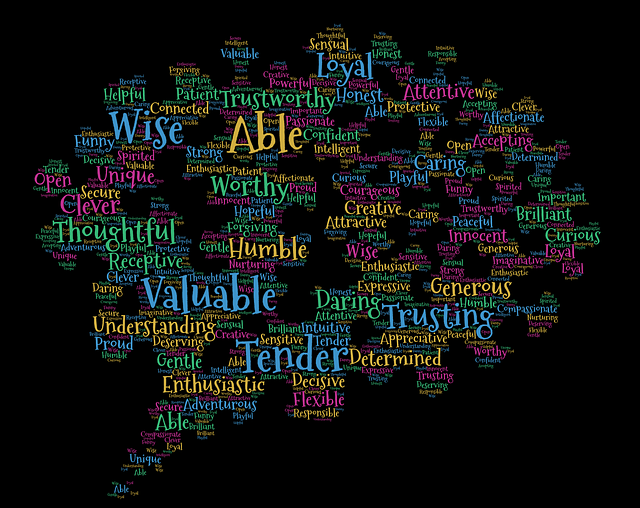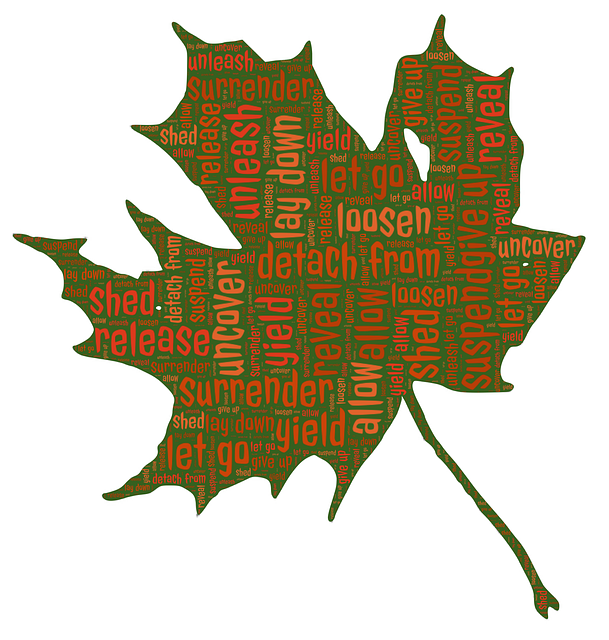In the May Creative Meetup, sponsored by the Health Story Collaborative, we focused on the theme of “surrender”. The discussion proved to be both inspiring and insightful with participants freely sharing their wisdom born of their lived experience of dealing with chronic illness or disability. One area we looked at was the act of “letting go” of what is holding us back – our old beliefs, self-doubts, negative self-stories, fears, and expectations of ourselves and others. Associated with surrender, too, is the possibility of shedding an identity that no longer works for us.
Another sub-theme was that of “giving up” as Lily Tomlin comments, “to give up all hope of a better past”. It also means accepting ourselves “as we are” with all our foibles, mistakes, deficiencies, hurts, disappointments, losses and limitations. It involves accepting that we are not perfect and, in the process, opening ourselves to life’s challenges and vicissitudes. It is about achieving equanimity through acknowledging the fragility of the human condition. Our facilitator for the Meetup, Jennifer Harris, shared a passage from Jeff Brown in which he encourages us “to celebrate how far we have come”, noting that the “river doesn’t ask itself why it is not an ocean”.
Negative self-talk – an impediment to creativity
In their book, What Happened to You?, Dr. Bruce Perry and Winfrey Oprah point out that personal trauma can lead to a distorted worldview, sensitivity to cues (triggers) and negative self-messages. In reflecting as part of the Creative Meetup process, I realised that my adverse childhood experiences contributed to my sense that I was “not good enough” and, at times, that I was actually an “impostor”.
Seth Godin, best-selling author of 21 books, maintains that this kind of negative self-talk is an impediment to creativity and the realisation of our potential. There were times in my life when I was full of self-doubt and beset with “fear of failure’ or inability to achieve my desired outcomes. I also felt discouraged by resistance to organisational changes or innovations I was trying to create.
Seth Godin contends that uncertainty about outcomes is integral to the concept of creativity – we “go out on a limb” or “leap into the unknown” when we attempt to develop something new or introduce a change to the way things are done. For Seth, the chance of failure is always present when you are being creative. He argues that focusing on process rather than outcomes can free us from fear and enable us to explore new opportunities unimpeded by uncertainty.
Seth reinterprets the concept of “impostor” to acknowledge that whenever we are being creative the outcomes are uncertain. In that sense, we will feel that we are “fake” or not the “real thing” because we cannot guarantee the outcome – a natural sensation in the face of uncertainty. The ”impostor syndrome” can occur whether we are engaged in writing, facilitating, managing people or undertaking some other creative activity.
Gratitude for social support
Social support can take many forms and may involve groups or individuals. Sometimes it is being supported by a group, such as the Creative Meetups, where you share your stories, challenges and insights. At other times it may involve emotional and intellectual support from someone who helps you overcome fear of failure. When I reflected on the theme of surrender, I became acutely aware of the many people who have helped me during my life to achieve significant outcomes despite my ingrained self-doubts – to help me “let go” of the fear and embrace the creative challenge. This reflection, in turn, engendered a strong sense of gratitude towards all of these individuals who have had a positive influence in my life by believing in me and my capabilities. Some outstanding examples include:
- My Mother, a devout Catholic, who supported my education at a private school and believed that I was destined to be a priest and was capable of successfully undertaking the relevant study and training. To that end, I joined a Contemplative Order and completed five of the six years required for ordination as a priest. However, I left before my final year owing to illness and external factors. During my training, I excelled in my studies, was exposed to the emerging fields of Existentialism and Phenomenology, enjoyed the practice of silence and learnt to meditate and sing Gregorian Chant. It was a life of incredible richness and balance – with strong group social support, challenging learning, daily prayer and meditation, sport and recreation and work on the farm owned by the Order.
- Charlie Venning, my boss and mentor in the Brisbane Taxation Office, who believed in me to the point of promoting me to be Chief Internal Auditor, Manager of 90 staff engaged in collecting AUD700 Million of taxpayer revenue and, eventually, an Executive Director.
- Peter Sullivan, a visionary Executive who worked in the Canberra Head Office of the Australian Taxation Office. Peter had such a strong belief in my capabilities that he engaged me over a number of years to work on three significant national projects involving the organisation-wide development of the Taxation Office. Peter always believed that I was capable of achieving more than I ever dreamed was possible.
- Emeritus Professor Ortrun Zuber-Skerritt, author/co-author of 50 books, who first engaged me in 1989 to be the Government representative on the First International Symposium on Action Research in Higher Education, Government and Industry held in Brisbane. In 1991, Ortrun and I were founding executive members of the Action Learning and Action Research Association which continues today and has had a significant role in promoting action learning and action research on a global basis through World Congresses, international conferences, publications and speaking engagements. I was President of the Association for five years from 1992. Ortrun proved to be my mentor, PhD supervisor and friend of more than 30 years. When I doubted my capacity to do a PhD, she encouraged me strongly and provided me with ongoing support. I have become one of her international “critical friends” for her book writing and provided concept editing for some of her books as well as book reviews. I have also contributed chapters to four of her books and a chapter, The Practical Visionary, to the book produced to honour her lifelong contribution to action learning and action research. Ortrun is a visionary who has enviable tenacity, resilience and resourcefulness – part of her German inheritance.
- Reg Revans, Father of Action Learning, I met Reg Revans in 1990 when he was a Keynote Speaker at the First World Congress on Action Learning and Action Research. Ortrun was Convenor of the Congress and had invited Reg. I picked up Reg from the airport when he arrived in Brisbane from the UK and took him to his motel opposite Griffith University. Reg asked if I could show him the QE11 Stadium, the site for the 1982 Commonwealth Games which was adjacent to the University. In 1930, Reg had represented Britain at the Commonwealth Games and won a silver medal in the triple jump and long jump. After taking him on a car tour of the site, I joined Reg for dinner at his motel and his charisma was evident to all in the restaurant – he was a great storyteller. Reg inspired everyone at the Congress and his work continues to inspire me today. I completed my action learning PhD in 1996 drawing heavily on Reg’s work and his book, The Origins and Growth of Action Learning. My colleague, Julie Cork, and I have conducted over 70 longitudinal, action learning programs for managers over the last 16 years (involving more than 2,000 managers). We are currently co-authoring an action learning book for managers based on our experience in our manager development programs. Julie, too, has been a very positive influence on me through her belief in my facilitations skills, my understanding of action learning, and my knowledge of manager and organisation development, as well as her willingness to explore the unknown and to collaborate on creating innovative programs.
- Dr. Bob Dick taught me about organisation development and facilitation skills at the University of Queensland in the 1980’s when I undertook my MBA majoring in training and development. Bob had an acknowledged, unique, participative style of teaching. I have modelled my facilitation/co-facilitation of more than 1,000 workshops on his style. Bob also provided mentorship for me when I was engaged in organisation development activities in the Taxation Office over a number of years. We have also worked together to promote action learning and action research and to co-author a book on this topic. I highly value our 40 years of friendship and collaboration.
- Selva and Param Abraham who had an unshakeable belief in my action learning expertise and sound knowledge of the Tertiary Education Sector. They are founding owners and now co-owners of the Australian Institute of Business (AIB) – accredited to doctoral level and the largest provider of MBA’s in Australia. During my 32 years working in an adjunct capacity at AIB (1985-2017), I designed postgraduate courses, was a member of the Academic Board and eventually, Chair of the Research Committee. I also contributed substantially to the organisation’s ongoing accreditation within the Australian Higher Education System. In my final year when I retired as a Professor of Management, I was honoured with the award of Emeritus Professor.
- My State Director in the Federal Government Department of Social Security who appointed me as HRM Director as an external applicant (against the trend of internal promotions) and, subsequently, Director, Corporate Services, with responsibility for training and development, human resource management, staffing levels and pay for 3,000 staff in 30 locations across Queensland. He eventually recommended me for secondment to Griffith University where I spent 11 years as an academic.
- Emeritus Professor Fals Borda of the Bogota University who believed in my capacity to co-convene a World Congress on Action Learning and Action Research, held in Cartagena, Colombia (South America) in 1997. The Congress was attended by 1,800 people from 61 countries. I arranged seeding money for the Invitations to Present; participated as a member of the International Planning Committee as well as an Expert Panel Member; acted as Coordinator of the Organisational Development Stream; and officially opened the Congress with Orlando. The occasion led me to conduct an impromptu workshop on action learning and organisational change with a group of postgraduate students who were Spanish-speaking. One of their number acted as interpreter as I progressively explained a major action learning, organisational development project that was the subject of my PhD.
- Seth Godin, among other things, was the creator of the social media platform, Squidoo (2005). The platform enabled people to create Squidoo Lenes (effectively individual, modular websites) on any topic – a very strong encouragement to write and share knowledge and understanding. Revenue from the site, generated through affiliate links/modules, was shared with authors and charities. Squidoo was also an active community of writers from across the world and became the source of two of my long-standing friendships with my German counterparts, Anne Corcino and Achim Thiemermann, who were resident in America. Together we collaborated in 2011 with two resident German programmers, Hans Braxmeier and Simon Steinberger, to build the Wizzley social media site – an online community of writers still operating today. Seth and Squidoo proved to be a great inspiration for my writing and I became a “leader’ in the platform with more than 100 Squidoo lens. I then went on to create a 6-month social media training program and developed a blog and e-book on Squidoo Marketing Strategies. Seth provided personal encouragement when he featured my biographical Squidoo lens in his monograph, For the Love of Squidoo, commenting positively on my interesting career and humourous article, An Ethnographical Study of Cartagena Taxi Drivers. Unfortunately, Squidoo became one of the dead websites after a very successful run and was sold to HubPages – which proved to be a sad day for Squidoo advocates. Seth, a globally acknowledged marketing guru, has a blog on which he writes daily posts. Seth’s blog has been a long-standing inspiration for my own blog on mindfulness. I started writing posts daily too but this became too much when I had to conduct workshops in multiple locations across the State. However, since 2016, I have created in excess of 750 posts on this Grow Mindfulness blog.
I am conscious that, owing to time and space, I have not done justice to the level of influence that these people have had on my career and life. I am also conscious that I have omitted other people who strongly influenced me in a positive way such as Emeritus Professors David Limerick and Richard Bawden.
Reflection
It is clear to me that social support is critical for personal development and the realisation of a person’s potential. It also has a significant healing power. The social support, both individual and group support, that I have enjoyed over many years has enabled me to overcome some of the residual effects of adverse childhood experiences. Social support enables us to surrender – to let go of negative self-stories, to build self-efficacy, open new horizons and go beyond where we have travelled before. I can relate strongly to the metaphor, Standing on the Shoulders of Giants – an allusion to achieving intellectual and emotional progress by building on the ground-breaking understanding of those who have gone before.
In reflecting on the social support provided by the individuals who helped me to let go of my self-doubts and fear, I am filled with gratitude for their positive contributions to my career and life. Surrendering by “letting go” thus provides a pathway to gratitude.
As we grow in mindfulness through reflection on our life journey and appreciation of all who have helped us on our way, we can gain renewed strength to move forward and contribute to a better society. The Creative Meetups sponsored by the Health Story Collaborative have a key role in this endeavour by enabling writing, reflection and storytelling for health and personal development.
___________________________________________
Image by John Hain from Pixabay
By Ron Passfield – Copyright (Creative Commons license, Attribution–Non Commercial–No Derivatives)
Disclosure: If you purchase a product through this site, I may earn a commission which will help to pay for the site, the associated Meetup group and the resources to support the blog.


